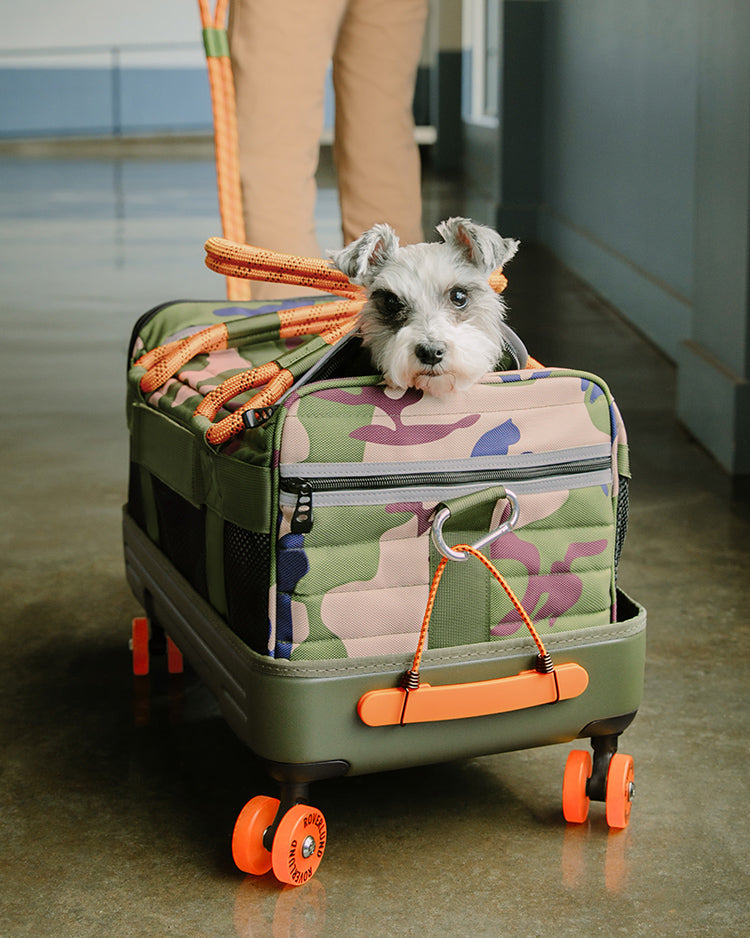7 Tips to Get Your Pup Acclimated to their Pet Carrier
Once you have chosen the proper carrier for your pup, it is crucial to get them acclimated to their new safe haven so they feel at-ease when they are zipped up during travel. Here at Roverlund, we know firsthand how important a pup’s feeling of safety is for stress-free trips together.
Utilize these seven tips to get your co-pilot comfy-cozy in their new Roverlund carrier!

1. Determine Your Pup’s Comfort Level
Set the carrier out in your living room, and allow your pup to explore the carrier under your supervision. Some pups will hop on in and curl up in a new carrier right away, but not all dogs will immediately feel at home in their new den. If this is the first carrier your pup has used, they may need more time and coxing to get acclimated; this can especially be true for cats.
2. Start Them Young
The best time to acclimate a pet to a carrier is while they are young. So, if your dog is still a puppy—or your cat is a kitten—we highly recommend introducing them to the carrier as early as possible. We have found allowing them to sleep in their carrier near you at night, as little ones, can quickly get them to feel that their carrier is their den.
3. Create a Positive Association
Food and treats are the way to a pup’s heart! Feeding your pup their meals in the carrier is one of the best ways to create a positive association with their new space. You can also opt to reward them for going in the carrier with treats, instead of full meals.
4. Put a Familiar Scent Inside
A familiar scent will typically put your pup at ease. Any cloth that is safe for them to be left alone with that has your scent on it—like an old t-shirt or their favorite blanket—will reassure them they are in a safe space.
5. Take Them for Test Walks and Drives
Once they are comfortable going in the carrier, take them out for a spin. Zip up your pup in their carrier and take them for a walk around the house. Anything you can do to simulate their traveling experience will help them get used to their carrier.
6. Watch for Bad Behavior
Set clear boundaries around how your pup behaves in their carrier. Make sure they understand they are not allowed to chew or scratch their carrier early on. Discipline any negative behavior, including barking.
If your pup shows continuous behavioral issues in the carrier, they may not be fit for airline travel and may require additional obedience training.
7. Don’t Be Afraid to Experiment!
Each pup or kitty is unique and will have different needs when it comes to getting acclimated to a new space, so these tips are just a starting point.
We hope this has served as a foundational guide to getting your adventure buddy happily cuddled up and set to sail in their new Roverlund carrier!


